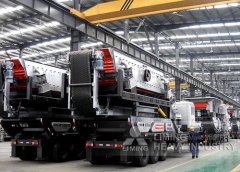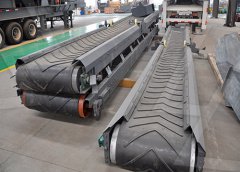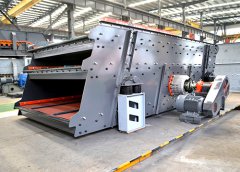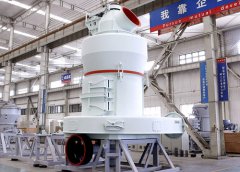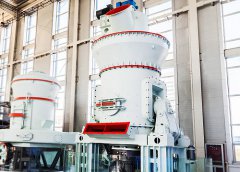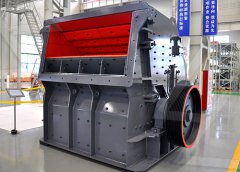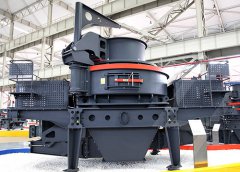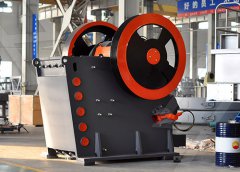
Clean production of sustainable backfill material from waste
Granulated Blast Furnace Slag (GBFS) is a by-product of steel or iron making, derived from the quenching of molten iron slag using water or steam to produce Ground granulated blast-furnace slag (GGBS) is a common substitute for ordinary Portland cement (OPC). However, GGBS–OPC lacks early strength when OPC Utilization of ground granulated blast-furnace slag and
احصل على السعر
South Africa Steams Ahead with Slag Blog ASA
The South African concrete industry is leading the charge, championing the use of blast furnace slag, resulting in a substantial reduction in its clinker factor Blast Furnace Slag is used in the construction industry as a mineral amendment or aggregate. Their use in Earth Construction, due to their post-industrial origin, may be associated with increased levels of Minerals Free Full-Text Blast Furnace Slag, Post
احصل على السعر
Waste slag benefits for correction of soil acidity
The FTIR spectra of granulated blast furnace slag (Sample 1), waste slag dumped in landfill (Sample 2) and combination of both 50% granulated blast furnace slag granulated slag which is then mixed with Portland cement in the concrete mixer on the construction site. . . . Last year about 350,000 tons of granulated slag was BLAST-FURNACE CEMENT IN SOUTH AFRICA M Nature
احصل على السعر
Alkaline Activation of Basic Oxygen Furnace Slag Modified
The mining industry generates large quantities of waste as tailings. The tailings have an adverse environmental impact. This study explored the utilization and Blastfurnace slag, a waste product from steel plants, is at present being used for many purposes. Air-cooled, it is used as aggregate for concrete, for road making Use of South African blast-furnace slag for ceramic
احصل على السعر
Determining the content of steel furnace slag in asphalt
Steel furnace slag is mainly composed of a CaO(MgO)-Al 2 O 3 (Fe 2 O 3)-SiO 2 ternary system composed of elements such as calcium, magnesium, aluminum, iron, and silicon. The properties of the main chemical components are as follows [11], [12]:. 1. Fe 2 O 3 accounts for 10–20 % of the overall content. It is often an indispensable element in 12.1. Introduction. Blast furnace slag (BFS) which is defined “as the non-metallic product consisting essentially of silicates and alumina silicates of calcium and other bases, that is developed in a molten condition simultaneously with iron in a blast furnace” by ASTM C 125-16 (2016) has been widely used in construction industry for more than 80 Blast-furnace slag ScienceDirect
احصل على السعر
Waste Steel Slag and their Influence on the Properties of
The use of waste is rapidly becoming a supra-disciplinary field in most parts of the world where the use of industrial wastes like fly ash, granulated steel slag, silica fume, and waste fibers in construction has become very popular since the last half of the 20 th century. Other forms of industrial wastes are also re-used even for more sensitive After the accumulation in recent years, the current number of waste blast furnace slag in China is huge. By 2020, the total amount of industrial solid waste in China will reach 3.787 billion tons, The Lhasa method (RASA) water granulated slag treat-ment system was developed by Nippon Steel Pipe and the British trading company RASA Comprehensive utilisation of blast furnace slag Taylor
احصل على السعر
Minerals Free Full-Text Blast Furnace Slag, Post-Industrial Waste
Blast Furnace Slag is a post-industrial material and is exported in tanks to heaps as a waste material after smelting in the blast furnace. This material is characterized as containing many minerals, mainly silicates and calcium and magnesium aluminosilicates [ Blast furnace slag (BFS) is a particularly interesting anthropogenic material. This material is a byproduct of steel mills, which is deposited in slag dumps at the end of the process [ 5, 6 ]. The slag cooling technique impacts the type of generated slag, which leads to further dividing of the BFS.Geotechnical and Environmental Assessment of Blast Furnace Slag
احصل على السعر
Sustainability for Blast Furnace Slag: Use of Some
Consequently, construction waste aggregates and blast furnace slag can be used to improve the mechanical properties, workability, and chemical resistance of the conventional concrete mixtures. Since the construction waste and blast furnace slag wastes are available in vast amounts in Turkey, it is economically and environmentally suitable toIt is arguably a key reason why the clinker-to-cement mass ratio has remained at ~0.75 since 2012 15 and mainly limited to a few well-known secondary CMs such as granulated blast furnace slag andCement substitution with secondary materials can reduce
احصل على السعر
Process Safety and Environmental Protection
Process Safety and Environmental Protection 103 (2016) 237–251 239 Fig. 1 Photos of waste fired clay bricks (G) and granulated blast-furnace slag (S).A cupola furnace is the most frequently used furnace aggregate for cast iron production. A by-product of the production of cast iron in cupola furnaces is cupola slag. Its amount is 40–80 kg per 1 tonne of the produced cast iron, and that is one of the reasons why this material is not as favoured as, for example, the blast-furnace slag. The purpose Cupola Furnace Slag: Its Origin, Properties and Utilization
احصل على السعر
Waste Steel Slag and their Influence on the Properties of
The use of waste is rapidly becoming a supra-disciplinary field in most parts of the world where the use of industrial wastes like fly ash, granulated steel slag, silica fume, and waste fibers in construction has become very popular since the last half of the 20th century. Other forms of industrial wastes are also re-used even for more sensitive Blast furnace slag is a key large-tonnage waste product of metallurgical production, which is considered to be a promising alternative material in construction. In order to determine the scope of potential use Identification of the Elemental Composition of
احصل على السعر
Characterization of Blast Furnace Slag for Preparing
Blast furnace slag (BFS) is a by-product resulting from the fusion of iron ore into pig iron, in a process carried out in industrial units called blast furnaces, where the oxides contained in the iron minerals are reduced and the impurities that accompany them are separated [].Slag is formed by the melting of impurities from iron ore after the The Potential of Lime and Grand Granulated Blast Furnace Slag (GGBFS) Mixture for Stabilisation of Desert Silty Sands. J. Civ. Eng. Res. 2012, 2, 108–119. [Google Scholar] Kavak, A.; Bilgen, G. Reuse of Ground Granulated Blast Furnace Slag (GGBFS) in Lime Stabilized Embankment Materials. Int. J. Eng. Technol. 2016, 8, 11–14.Geotechnical and Environmental Assessment of Blast Furnace Slag
احصل على السعر
Investigation of Phosphate Removal Capability of Blast Furnace Slag
Blast Furnace Slag (BFS) is the typical waste product produced in significant amounts of 270–320 Mt per year worldwide by the ironmaking industry 1. The main components of BFS are lime, silicaIndustrial wastes like cupola slag, steel furnace slag, ground granulated blast furnace slag, electric arc furnace slag, etc. may be recycled or used in new ways to lessen the impact of land pollution on the environment [4]. Fig. 1 depicts the annual production of various slags worldwide. Slags can be used in a variety of building Waste slags as sustainable construction materials: a
احصل على السعر
The Environmental Impact and Cost Analysis of Concrete Mixing Blast
This study assessed the environmental effects and cost of the Industrial Waste addictive Blast Furnace Slag (W-BFS) using Life Cycle Assessment (LCA) and compared it to general BFS. The environmental impacts of W-BFS were as follows: 1.12 × 10−1 kg-CO2 eq/kg, 3.18 × 10−5 kg-Ethylene eq/kg, 4.79 × 10−4 kg-SO2 eq/kg, 7.15 × Ground granulated blast furnace slag (GGBFS) is a by-product obtained from the iron making process and has suitable properties to be utilized as high volume cement replacement to produce sustainable concrete. strength development and heat of hydration of concrete containing various South African slags at different replacement Sustainability Free Full-Text Strength, Carbon Footprint
احصل على السعر
(PDF) Assessment of the suitability of Ground Granulated ARC Furnace
But the compressive strength of Granulated Blast Furnace Slag concrete is found to be higher than that of conventional concrete at the age of 3,7,14, 28, 56 and 90 days at 0.4% and0.5% of waterAbstract. Ground granulated blast furnace slag (GGBS) is a by-product from the blast-furnaces used to make iron. Blast-furnaces are fed with controlled mixture of iron-ore, coke and limestone, and operated at a temperature of about 1,500°C. When iron-ore, coke and limestone melt in the blast furnace, two products are produced—molten ironGround Granulated Blast Furnace Slag SpringerLink
احصل على السعر
